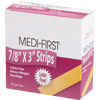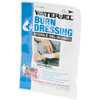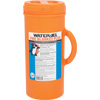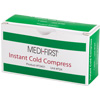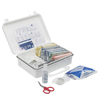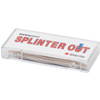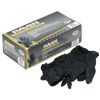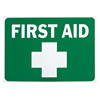First Aid Equipment Requirements & Standards
Employees have the right to access first aid kits, first aid supplies, and first aid equipment in the event of an on-site workplace emergency.
According to the Occupational Safety and Health Administration (OSHA), workplaces are required to have a person trained in first aid on site and to ensure first aid supplies are readily available.
OSHA's standard 29 CFR 1910.151 specifically says, "In the absence of an infirmary, clinic, or hospital in near proximity to the workplace which is used for the treatment of all injured employees, a person or persons shall be adequately trained to render first aid. Adequate first aid supplies shall be readily available."
First aid kits are a conventional and convenient solution to providing employees with the first aid supplies they need.

Types of First Aid Kits
As of June 17, 2016 American National Standard Institute (ANSI) standard 308.1-2009 is replaced by Z308.1-2015. The new code outlines two different types of first aid kits/cabinets to address the need of two different types of workplaces. Let us help you understand the changes.
Class A First Aid Kits provide the minimum number of items for common workplace injuries, minor wounds, burns, or eye injuries.
Class B First Aid Kits serve high-risk workplaces where employees are required to use personal protective equipment, and could suffer more serious injuries.
Class A & Class B promote workplace compliance. If your workplace includes wearing PPE, the Class B first aid kit is ideal. ANSI classifies first aid kits in four types as detailed in the table below:
| Type | Use | Portable | Mountable | Water Resistant | Waterproof | Kit Examples |
|---|---|---|---|---|---|---|
| I | Indoor | X | Cabinets | |||
| II | Indoor | X | Soft Packs | |||
| III | Indoor/Outdoor | X | X | X | Plastic Kits | |
| IV | Indoor/Outdoor | X | X | X | See Section 5.2.5 |
To be in compliance with ANSI standards, first aid kits must contain the following items and quantity:
ANSI 2015 First Aid Kit Minimum Quantities
| First Aid Supplies | Class A | Class B |
|---|---|---|
| Adhesive Bandage | 16 | 50 |
| Adhesive Tape | 1 | 2 |
| Antibiotic Application | 10 | 25 |
| Antiseptic | 10 | 50 |
| Breathing Barrier | 1 | 1 |
| Burn Dressing (gel soaked) | 1 | 2 |
| Burn Treatment | 10 | 25 |
| Cold Pack | 1 | 2 |
| Eye Covering, with means of attachment |
2 | 2 |
| Eye/Skin Wash 1 fl oz total | 1 | — |
| Eye/Skin Wash 4 fl oz total | — | 1 |
| First Aid Supplies | Class A | Class B |
|---|---|---|
| First Aid Guide | 1 | 1 |
| Hand Sanitizer | 6 | 10 |
| Medical Exam Gloves | 2 pair | 4 pair |
| Roller Bandage 2 inch | 1 | 2 |
| Roller Bandage 4 inch | 0 | 1 |
| Scissors | 1 | 1 |
| Splint | 0 | 1 |
| Sterile Pad | 2 | 4 |
| Tourniquet | 0 | 1 |
| Trauma Pad | 2 | 4 |
| Triangular Bandage | 1 | 2 |
Maintaining and Labeling First Aid Kits
First aid kits should be refilled as soon as supplies are removed to remain in compliance with ANSI and OSHA requirements. ANSI standards state that first aid kits "continue to be compliant only when maintained with products that meet the standard at specified quantities."
Where to Place First Aid Kits
In general, all first aid kits and right-to-know literature must be easily accessible to all employees. Each first aid kit and/or location must be visibly marked to identify the place where first aid supplies are stored. There is no specific height to mount first aid kits and right-to-know literature, but all materials must be easily accessible to all employees.
Shop Safety Signs
NOTE: This information is a summary interpretation and was prepared as general reference material only. This summary is not authoritative as laws can be amended over time. For specific compliance requirements and updates, please refer to the actual code language and the statute or legal counsel.

